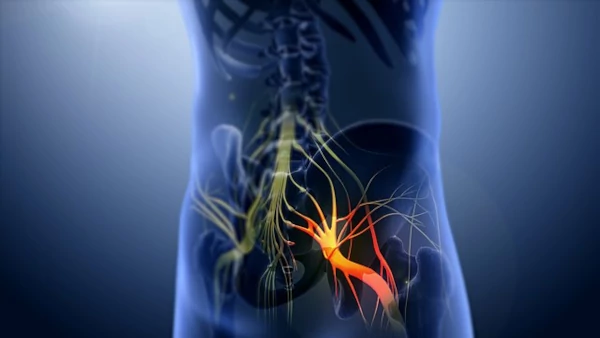Carpal Tunnel Syndrome (CTS) is a common medical condition that affects millions of people worldwide. It is caused by compression of the median nerve as it travels through the wrist at the carpal tunnel. In this article, we will discuss the symptoms, causes, and treatment options for CTS.
Symptoms of Carpal Tunnel Syndrome
The symptoms of CTS can vary from mild to severe, and they usually develop gradually over time. Some of the most common symptoms of CTS include:
Tingling or Numbness
One of the most common symptoms of CTS is a tingling or numbness sensation in the fingers, especially in the thumb, index, and middle fingers. This sensation is often described as pins and needles.
Weakness
As CTS progresses, it can lead to weakness in the hand, making it difficult to grip or hold onto objects.
Pain
Pain is another common symptom of CTS. The pain can be felt in the wrist, hand, forearm, and even the upper arm.
Causes of Carpal Tunnel Syndrome
Several factors can contribute to the development of CTS. Some of the most common causes of CTS include:
Repetitive Hand Movements
Repetitive hand movements, such as typing, can lead to the development of CTS. This is because these movements can put pressure on the median nerve, causing it to become compressed.
Medical Conditions
Certain medical conditions, such as diabetes and arthritis, can increase the risk of developing CTS.
Pregnancy
Pregnancy can also increase the risk of developing CTS. This is because the hormonal changes that occur during pregnancy can cause swelling, which can put pressure on the median nerve.
Treatment Options for Carpal Tunnel Syndrome
There are several treatment options available for CTS, depending on the severity of the condition. Some of the most common treatment options include:
Rest and Splinting
Resting the affected hand and wearing a wrist splint can help to relieve the symptoms of CTS.
Medications
Certain medications, such as nonsteroidal anti-inflammatory drugs (NSAIDs), can help to reduce pain and inflammation associated with CTS.
Physiotherapy / Physical Therapy
One common physiotherapy treatment for carpal tunnel syndrome is splinting. A wrist splint can help to keep the wrist in a neutral position, reducing pressure on the median nerve and providing relief from symptoms. This is often recommended for nighttime use.
Another treatment option is manual therapy, which involves hands-on techniques to mobilize the wrist and improve the range of motion. Soft tissue mobilization, joint mobilization, and nerve gliding techniques are often used.
Therapeutic exercises can also be beneficial in managing carpal tunnel syndrome. Strengthening exercises can help to improve wrist stability and reduce strain on the median nerve. Stretching exercises can help to improve flexibility and reduce tension in the wrist.
Ultrasound therapy and electrical stimulation can also be effective treatments for carpal tunnel syndrome. These modalities can help to reduce pain, inflammation, and swelling in the affected area.
Dry needling has been found to be effective in reducing pain, inflammation, and swelling associated with carpal tunnel syndrome. The needles can also help to stimulate the body’s natural healing process by increasing blood flow to the affected area.
In addition, ergonomic modifications and education on proper body mechanics can also be provided by a physiotherapist to prevent further strain on the wrist and promote healing.
Surgery
In severe cases of CTS, surgery may be necessary to relieve the pressure on the median nerve.
Conclusion
Carpal Tunnel Syndrome is a common medical condition that can cause tingling, numbness, weakness, and pain in the hand and wrist. It is caused by compression of the median nerve as it travels through the carpal tunnel. Treatment options for CTS include rest and splinting, medications, physical therapy, and surgery. If you are experiencing symptoms of CTS, it is important to consult with a healthcare professional for an accurate diagnosis and appropriate treatment.
FAQs
Can Carpal Tunnel Syndrome be prevented?
While there is no guaranteed way to prevent CTS, taking breaks from repetitive hand movements, maintaining good posture, and keeping the wrists in a neutral position can help reduce the risk of developing CTS.
How is Carpal Tunnel Syndrome diagnosed?
CTS is typically diagnosed through a physical exam, medical history review, and nerve conduction tests.
Can Carpal Tunnel Syndrome be cured?
While there is no cure for CTS, treatment options can help relieve symptoms and improve function.
Is surgery for Carpal Tunnel Syndrome risky?
Like any surgical procedure, there are risks associated with CTS surgery, including infection, bleeding, and nerve damage. However, the risks are generally low, and most people experience significant relief from their symptoms after the surgery.
It is not uncommon for carpal tunnel syndrome and thoracic outlet syndrome to be confused with each other during diagnosis due to the similar symptoms they can present with. However, it is important to note that these two conditions are distinct and require different treatment approaches.
If you are experiencing symptoms that may be related to carpal tunnel syndrome or thoracic outlet syndrome, it is important to consult with a healthcare professional for an accurate diagnosis and treatment plan. To learn more about the differences between these two conditions, we encourage you to read our blog post on “Thoracic Outlet Syndrome: Symptoms, Causes, and Treatment Options”.



